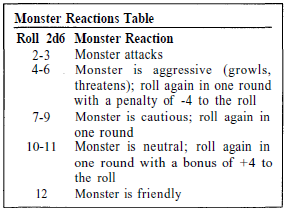That's not all of it. There is no system-relevant use in getting friends, lovers or even enemies. Not that I want this to be an important part of my game, but it would be nice as an option for players to take the game wherever they want. Got to be something they have to work on, too, something that evolves, a benefit to take care of. And to make it a little bit more complicated, it needs to be a fast and flexible little subsystem that gives a DM all he needs to bring a NPC to life.
Part 1 proposed a system how to get into a relationship, how to keep it, which benefits a character gets out of it and how it could fall apart. This is about how to find that special someone (in game terms).
To reiterate some ideas down that line:
- Relationships are unstable and may go either way, but it should be possible to stabilize them (Part 1).
- If you share experience, you get something out of it (treasure in form of presents could be in that mix, too) (Part 1).
- A benefit is connected to ability scores. This could be crucial in OD&D games, especially if you play with 3d6 per ability and no modification (Part 1).
- Opposing alignments could indicate if there is potential for some sort of relationship or not (Rules Cyclopedia is lawful, neutral, chaos, so that's what I'm working with here).
- An axis of 5 possible reactions on a first encounter: hatred - dislike - indifferent - friendly - love (reaction roll, see below).
- It's fragile and connected to the number of interactions (mainly 3 alternating phases: indifferent - unstable - stable) (Part 1).
- No work (like bookkeeping) for the players at first, the DM is the one giving the opportunity, then it's the players choice.
- Charisma shouldn't be the main focus for social interaction (some thoughts about that can be found here).
Random encounter/first contact:
It starts with the reaction roll, as usual. The Rules Cyclopedia gives one for Monsters and one for Retainers.
For NPCs I'll go with the distribution of the Retainer Reaction Table. Given the proposed ideas before, the result also indicates alignment and main ability score (in relation to the acting character) of a random encounter:
2D6 NPC
Roll Reaction*
2 Hate (opposing alignment**)
3-5 Dislike (opposing alignment**)
6-8 Indifferent (NPC of neutral alignment)
9-11 Friendly (same alignment)
12 Engaging/Love (same alignment)
* If a Monster Reaction roll turns friendly, skip NPC Reaction Table and go from there.
**With neutral characters, roll 1d6 for random alignment: 1-2 lawful, 3-4 neutral, 5-6 chaotic.
Main ability scores (NPCs)
Now the NPCs main ability score needs to be determined. It tells a DM a lot about the NPC. For one it shows the relation a NPC might have towards a character (does he/she hate the character for his strength because he his weak, or does he/she admire it, maybe even for the same reason, etc,). As a close second, the DM gets a hint what the NPC is about (a wise NPC might be into local politics, a dextrous one into related crafts, etc.).
A strong reaction shows a strong connection of sorts, a less strong reaction gives just a suggestion :
Love/hate (1d10): 1-5 characters main ability score; 6-10 indicates any other ability score than the characters main ability score, just go down the list and skip the ability score in question.
Any other reaction (1d6): 1 STR 2 DEX 3 CON 4 INT 5 WIS 6 CHA
A roll on the Character Aspects Table here might add a little spice to it.
What's missing
Part 3 will be about social status of NPCs (I'm thinking of trying something like the chaotic advancement table I did for Zombies...), the structure of communities and cultural impact on relationships.
Now the NPCs main ability score needs to be determined. It tells a DM a lot about the NPC. For one it shows the relation a NPC might have towards a character (does he/she hate the character for his strength because he his weak, or does he/she admire it, maybe even for the same reason, etc,). As a close second, the DM gets a hint what the NPC is about (a wise NPC might be into local politics, a dextrous one into related crafts, etc.).
A strong reaction shows a strong connection of sorts, a less strong reaction gives just a suggestion :
Love/hate (1d10): 1-5 characters main ability score; 6-10 indicates any other ability score than the characters main ability score, just go down the list and skip the ability score in question.
Any other reaction (1d6): 1 STR 2 DEX 3 CON 4 INT 5 WIS 6 CHA
A roll on the Character Aspects Table here might add a little spice to it.
What's missing
Part 3 will be about social status of NPCs (I'm thinking of trying something like the chaotic advancement table I did for Zombies...), the structure of communities and cultural impact on relationships.


No comments:
Post a Comment
Recent developments made it necessary to moderate posts again. Sorry about that, folks.